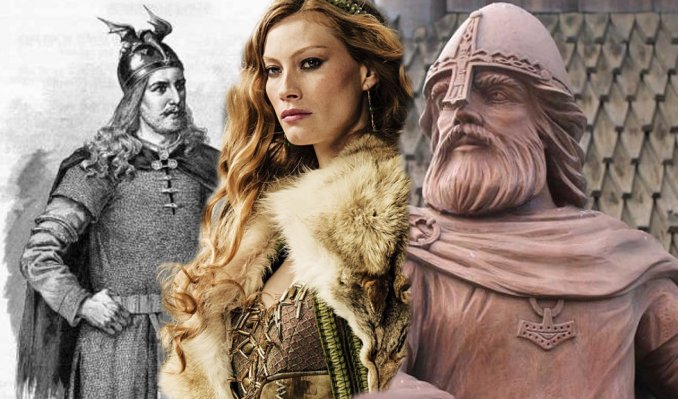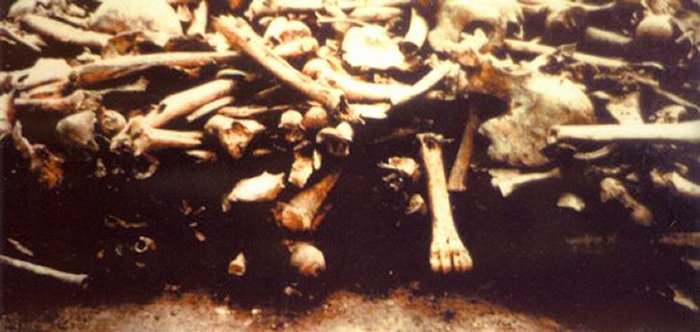Viking Ivar The Boneless Could Be Buried In Repton – Remarkable Viking Burial Holds Clues To Where Ragnar Lodbrok’s Son Died
Ellen Lloyd - AncientPages.com - Ivar the Boneless has gone into the history books as one of the most powerful Vikings ever lived. Not only was he one of the leaders of the Great Heathen Army, but he was also the oldest son of the famous Viking Ragnar Lodbrok. It’s, therefore, surprising we still know so little about this mighty Viking.
Many significant details about his life and death remain shrouded in mystery.
Can an impressive burial mound in Repton, UK, shed more light on how and where Ivar the Boneless died? One Icelandic Saga reveals that Ivar the Boneless died and was buried in England, but there is no information about the grave’s location. However, one notable burial in Repton reveals a prominent Viking was put to rest there. So, it’s fair to ask if perhaps Ivar the Boneless is buried in Repton.
Before we go into details about Ivar the Boneless’ death, it’s essential to know some facts about this great Viking who changed history in the countries he visited.
As previously discussed on Ancient Pages, Ivar the Boneless was one of Ragnar Lodbrok’s sons, and it could not have been easy. Lodbrok’s relation to his sons was full of contractions. He wanted his children to be brave, strong, and fearsome warriors, but at the same time, he was also afraid his sons could become more popular than he was.
Ragnar Lodrok wanted to kill his son Ivar the Boneless against Aslaug's wishes. Read more
It’s worth mentioning that Ivar the Boneless managed to survive as a tiny baby. On one occasion, Ragnar Lodbrok learned from a seer that he would have many famous sons. He became somewhat obsessed with this prophecy, which almost led to a tragic event when he tried to kill his son, Ivar the Boneless. But small Ivar survived; with time, he grew into a mighty Viking who became famous and feared.
In 865, Ivar the Boneless decided to invade England and launched the largest invasion of the British Isles in recorded history. His brothers Halfdan and Ubba and his colleague Olaf the White Ivar the Boneless sailed from Dublin and landed in East Anglia.
He had command of a force so massive that the English referred to it simply as “The Great Heathen Army.” It was a coalition of Norse warriors from Denmark and Norway (and possibly also from Sweden) who came together under a unified command.
In 871, Ivar the Boneless took the unwieldy but impressive title ‘King of the Northmen of all Ireland and Britain”.
Archaeologists discovered Viking graves in Repton. Credit: Repton Church
It’s unknown where he died, but according to a legend, Ivar the Boneless wanted to be buried in England. His corpse was allegedly transported from Dublin and interred in English soil.
Viking Warriors Of The Great Heathen Army Died In Repton
In November 2017, Ancient Pages reported a Viking camp dating to the winter of 873-4, was unearthed by a team of archaeologists from the University of Bristol.
It is located in the small village of Repton, Derbyshire, and has been known since the 1970s. Repton has long been a subject of excavations.
Historical records state that the Viking Great Heathen Army wintered in Repton, Derbyshire, in 873 A.D.
In 2018, researchers from the University of Bristol re-examined the graves. New dating proves that all remains are consistent with a single date in the 9th century and, therefore, with the Viking Great Heathen Army.
Of particular interest, in this case, is a burial mound that housed a Viking of great importance. The grave contains the intact skeleton of a huge man – supposedly nine feet tall – surrounded by the disarticulated remains of two hundred and fifty Vikings.
As previously discussed on Ancient Pages, Viking burial traditions and rituals were very complex.
The Vikings had no religion but customs, practices, and beliefs. Vikings developed a highly class-conscious and hierarchical society as in many other ancient civilizations.
250 warriors were buried next to a great Viking leader. Credit: Repton Church
Many relics in ancient tombs reveal that the type of burial a Viking received depended on his importance in the community. When a Viking died, he could either be buried or burned.
The Viking buried in Repton was put to rest together with 250 warriors. Most likely, they all died during the battle. Vikings took time to place all dead bodies to accompany this one great Viking in the afterlife. Artifacts discovered in the grave reveal special Pagan rites held in honor of the Viking. To receive such an elaborate and complex burial, the Viking must have held high status.
Some have speculated that Ivar the Boneless died and was buried in Repton.
There is also another puzzle dealing with Ivar the Boneless. Our previous article discussed the mystery of Ivar the Boneless and Ímar, a remarkable Viking puzzle that reveals something extraordinary. If true, it could re-write Viking history.
Updated on September 1, 2024
Written by Ellen Lloyd – AncientPages.com
Copyright © AncientPages.com All rights reserved. This material may not be published, broadcast, rewritten or redistributed in whole or part without the express written permission of AncientPages.com
More From Ancient Pages
-
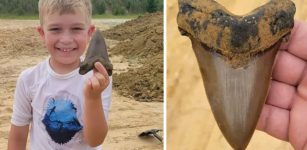 Young Boy Finds A Huge Tooth From A Prehistoric Shark In South Carolina
Archaeology | Sep 3, 2022
Young Boy Finds A Huge Tooth From A Prehistoric Shark In South Carolina
Archaeology | Sep 3, 2022 -
 America’s Oldest Tombstone: Jamestown’s Black “Marble” Knight’s Tombstone Was Imported From Belgium
Archaeology | Sep 27, 2024
America’s Oldest Tombstone: Jamestown’s Black “Marble” Knight’s Tombstone Was Imported From Belgium
Archaeology | Sep 27, 2024 -
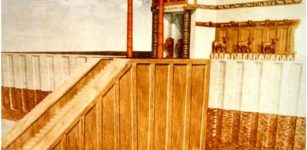 Beautiful Temple Dedicated To Ninhursag, Goddess Of Childbirth And Divine Protector Of Wild Animals
Civilizations | Jan 3, 2017
Beautiful Temple Dedicated To Ninhursag, Goddess Of Childbirth And Divine Protector Of Wild Animals
Civilizations | Jan 3, 2017 -
 Clurichaun – Little Naughty And Drunken Fellow Akin To Leprechaun In Irish Folklore
Featured Stories | Sep 13, 2019
Clurichaun – Little Naughty And Drunken Fellow Akin To Leprechaun In Irish Folklore
Featured Stories | Sep 13, 2019 -
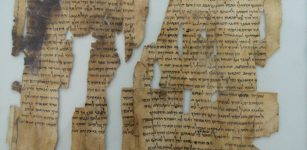 Ancient Secrets Of Mysterious Dead Sea Scrolls And Eastern Papyri Revealed By Handwriting Analysis
Archaeology | Oct 18, 2022
Ancient Secrets Of Mysterious Dead Sea Scrolls And Eastern Papyri Revealed By Handwriting Analysis
Archaeology | Oct 18, 2022 -
 Mysterious Ancient European Cloaked Individuals – Who Were These Perplexing Beings?
Featured Stories | Mar 15, 2025
Mysterious Ancient European Cloaked Individuals – Who Were These Perplexing Beings?
Featured Stories | Mar 15, 2025 -
 Ancient Warming Event May Have Been Trigged By Changes In Earth’s Orbit
Archaeology | Dec 13, 2022
Ancient Warming Event May Have Been Trigged By Changes In Earth’s Orbit
Archaeology | Dec 13, 2022 -
 Biblical City In Zanoah Offers Archaeological Evidence Of Moses’ Journey To The Promised Land
Archaeology | Jul 18, 2024
Biblical City In Zanoah Offers Archaeological Evidence Of Moses’ Journey To The Promised Land
Archaeology | Jul 18, 2024 -
 Ancient City Machu Picchu Was Originally Called Huayna Picchu By The Incas – Study Of The Name Reveals
Archaeology | Mar 23, 2022
Ancient City Machu Picchu Was Originally Called Huayna Picchu By The Incas – Study Of The Name Reveals
Archaeology | Mar 23, 2022 -
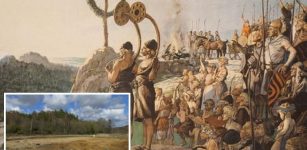 82 Mysterious 3,000-Year-Old Pits Discovered In Sweden – Bronze Age Cooking Pits And Ancient Ceremonial Center?
Archaeology | Jun 13, 2017
82 Mysterious 3,000-Year-Old Pits Discovered In Sweden – Bronze Age Cooking Pits And Ancient Ceremonial Center?
Archaeology | Jun 13, 2017 -
 12,000-Year-Old Ice Age Stone Tools Found – Earliest Dated Evidence For Human Activity in Scotland
Archaeology | Oct 10, 2015
12,000-Year-Old Ice Age Stone Tools Found – Earliest Dated Evidence For Human Activity in Scotland
Archaeology | Oct 10, 2015 -
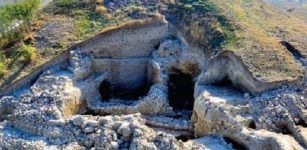 6,300 Years Old Golden Artifact Unearthed At Solnitsata ‘The Salt Pit’ Prehistoric Settlement
Archaeology | Nov 23, 2015
6,300 Years Old Golden Artifact Unearthed At Solnitsata ‘The Salt Pit’ Prehistoric Settlement
Archaeology | Nov 23, 2015 -
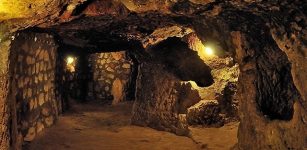 Highly Sophisticated Underground City Of Derinkuyu – Who Were The Master Builders?
Featured Stories | Jul 22, 2014
Highly Sophisticated Underground City Of Derinkuyu – Who Were The Master Builders?
Featured Stories | Jul 22, 2014 -
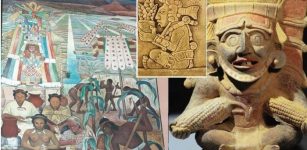 Yum Kaax, Mayan God Of Agriculture, Lord Of Woods And Caretaker Of Animals
Featured Stories | Jul 15, 2020
Yum Kaax, Mayan God Of Agriculture, Lord Of Woods And Caretaker Of Animals
Featured Stories | Jul 15, 2020 -
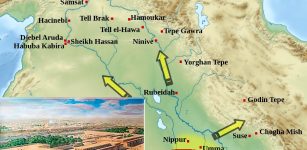 Uruk Was Ruled By Gilgamesh Who Built City’s Great Walls
Featured Stories | Jul 26, 2016
Uruk Was Ruled By Gilgamesh Who Built City’s Great Walls
Featured Stories | Jul 26, 2016 -
 LIDAR Technology Reveals Secrets Of Ancient Maya Civilization
Archaeology | Feb 3, 2018
LIDAR Technology Reveals Secrets Of Ancient Maya Civilization
Archaeology | Feb 3, 2018 -
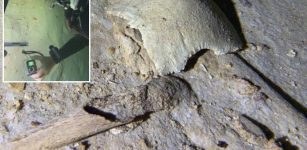 8,000 Year-Old Human Skeleton Discovered By Cave Divers Near Tulum, Mexico
Archaeology | Sep 15, 2022
8,000 Year-Old Human Skeleton Discovered By Cave Divers Near Tulum, Mexico
Archaeology | Sep 15, 2022 -
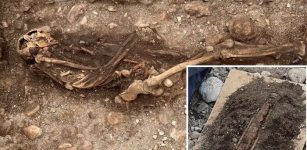 Unusual Iron Age Burial With Warrior And Sword Discovered On Gotland, Sweden – Was He From The Roman Empire?
Archaeology | Sep 7, 2021
Unusual Iron Age Burial With Warrior And Sword Discovered On Gotland, Sweden – Was He From The Roman Empire?
Archaeology | Sep 7, 2021 -
 Did Two Daughters Of Akhenaten Rule Together Under One Name Before Tutankhamun?
Archaeology | May 1, 2019
Did Two Daughters Of Akhenaten Rule Together Under One Name Before Tutankhamun?
Archaeology | May 1, 2019 -
 Early Humans Reached Northwest Europe 45,000 Years Ago – New Research Shows
Human Beginnings | Jan 31, 2024
Early Humans Reached Northwest Europe 45,000 Years Ago – New Research Shows
Human Beginnings | Jan 31, 2024


